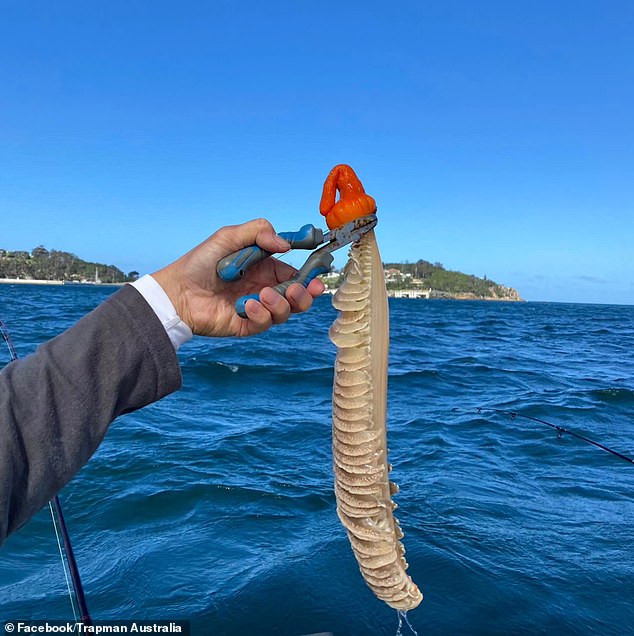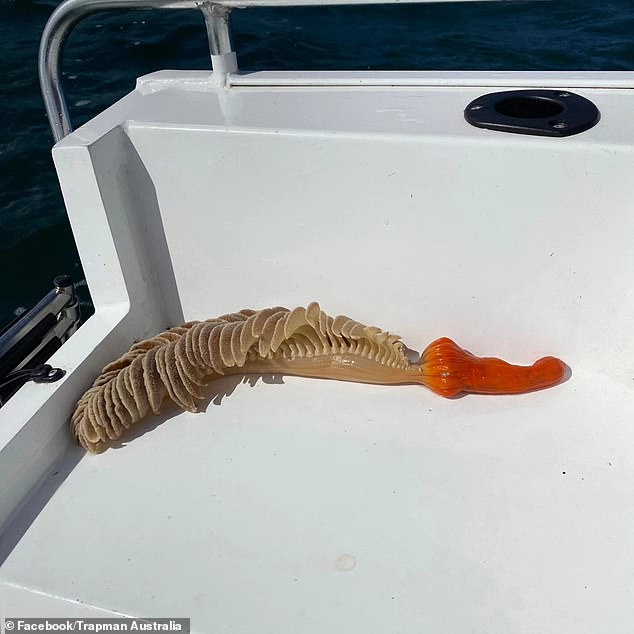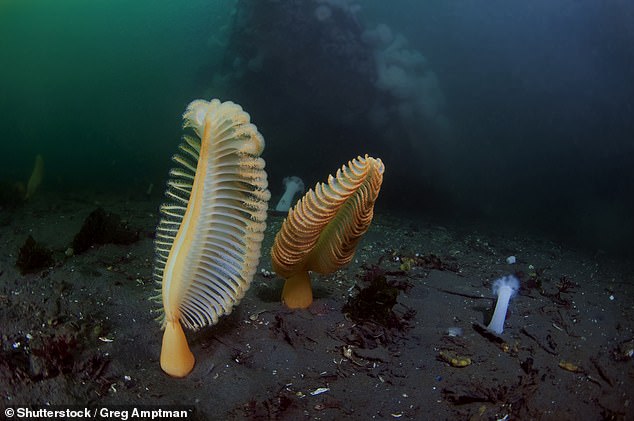Aussie baffled by mystery creature pulled from the water: ‘What is it?’
An Australian fisherman was left stunned after pulling a mysterious sea creature out of the water.
The white feather-like specimen had an orange hook-like curve at the base and was found from a boat in Western Port Bay in southern Victoria.
The curious fisherman shared photos of the sea creature on Facebook on Sunday to see if anyone could identify it.
Suggestions ranged from the plausible ‘shark egg’ or a ‘weed’ to the bold suggestion where some noted the phallic shape of the creature.
The white feather-like specimen has an orange hook-like curve at the base and was found from a boat in Western Port Bay in southern Victoria

Suggestions ranged from the plausible ‘shark egg’ or a ‘weed’ to the cheeky ‘d**k’, referring to the creature’s phallic shape
‘Some kind of sea cucumber?’ wrote one social media user.
The real explanation turned out to be more fascinating when Dr. Merrick Ekins of the Queensland Museum told it Yahoo it is a sea pen that probably comes from the virgularia species.
“(They are) endemic and not harmful,” he said.
According to the Melbourne Museum website, sea pens are actually a colony of animals made up of polyps.
Marine invertebrates are in the same class as anemones and corals.
They can live in places where currents prevail, in protected bays and waves, and in deeper waters near open coastal areas.

Sea pens are actually a colony of animals made up of polyps and are not harmful to pick up but can be prickly to the touch

The sea pen looks similar to a feather quill and uses its stem and ‘hook’ to burrow into sediment
The sea pen looks similar to a feather quill and uses its stem and ‘hook’ to burrow into sediment.
The feathery tip extends and catches floating food and also pumps water.
The invertebrates eat plankton and can grow up to 46 cm in length.
Although they are not harmful to pick up and touch, they can be prickly to the touch.
